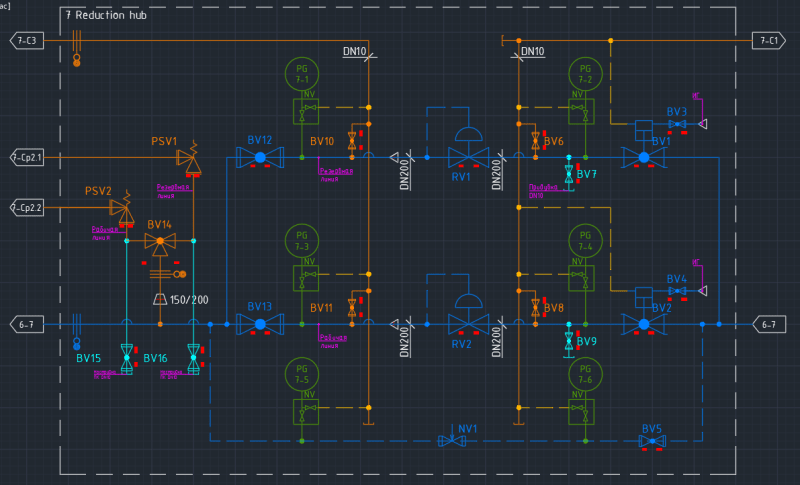VladimirWH
Petroleum
Hello!
I have a question about calculating safety valve and inlet/oulet pipe.
I know there are a lot of informmation in this forum about it but not exactly what I need. The thing is I'm working in russia with russian standart (GOST). In present time i'm worjing in unusual project and have some difficulties with using GOST in this case. So I'm going to describe shortly problem:
Project - natural gas preparation station.
Preparation - drying, reduction seprartion by consumer.
To reduce pressure I'm designed simple scheme: valve-reduction valve-valve-safety valve.
Trouble is that diameter of run pipe DN200 and using our "safety valve standart" I need design inlet-outlet pipe and safety equivalent by run pipe.
Now I have oulet pipe DN300 (which our opinion is too big) because standart safety valve already have manufacturer standart Inlet/oulet connection (in my case DN150/DN300).
So wee see that it's excessive demands (for equivalent) and want to find a way to reduce size of it. Why we think like that? Because all station have alert and special safety systam with manual and automatic valve which turn off/on if something goes wrong and we don't need a safety with run pipe equivalent flow rate.
Question is: how it designed, I'm about safety valve and pipe calculating, in USA or Europe natural gas preapration station?
Here P&ID.

I have a question about calculating safety valve and inlet/oulet pipe.
I know there are a lot of informmation in this forum about it but not exactly what I need. The thing is I'm working in russia with russian standart (GOST). In present time i'm worjing in unusual project and have some difficulties with using GOST in this case. So I'm going to describe shortly problem:
Project - natural gas preparation station.
Preparation - drying, reduction seprartion by consumer.
To reduce pressure I'm designed simple scheme: valve-reduction valve-valve-safety valve.
Trouble is that diameter of run pipe DN200 and using our "safety valve standart" I need design inlet-outlet pipe and safety equivalent by run pipe.
Now I have oulet pipe DN300 (which our opinion is too big) because standart safety valve already have manufacturer standart Inlet/oulet connection (in my case DN150/DN300).
So wee see that it's excessive demands (for equivalent) and want to find a way to reduce size of it. Why we think like that? Because all station have alert and special safety systam with manual and automatic valve which turn off/on if something goes wrong and we don't need a safety with run pipe equivalent flow rate.
Question is: how it designed, I'm about safety valve and pipe calculating, in USA or Europe natural gas preapration station?
Here P&ID.


